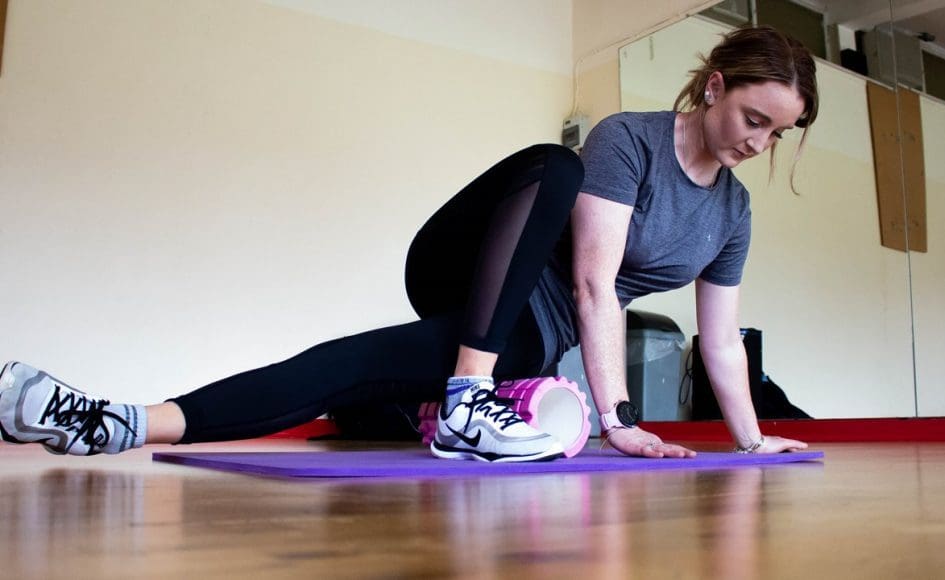The importance of mobility for runners
We all know that we should do some form of stretching. It feels good, helps prevent injury, corrects muscle imbalance and improves form. However, ensuring our joints and muscles are capable of a range of movements is just as important.
Stretching simply focuses on lengthening short and tight muscles, where as mobility is a great tool for addressing all elements that limit movement and performance.
Mobility refers to how freely a joint can move through a range of controlled motions, before being restricted with control. This is especially important to runners as it make us more aware of our bodies and our range of motion, leading to better running form and less injuries!
To ensure a full range of motion while running it is important to have a daily mobility routine that includes movement exercises, stretching and foam rolling. Foam rolling is good for increasing blood flow to your muscles and leads to better mobility, helping recovery and improving performance.
When working on your mobility, try to target areas that are tight and affect your mechanics such as your calves, shoulders, quads and hips. For example, when your hips are too tight, you begin to rotate them with each step creating torque on your knees, leading to pain and possibly injury.
The most common mobility exercise to identify and correct imbalances is the squat. Squatting increases strength throughout the body as requires you to engage your core and is a functional movement.
Here is a list of five mobility exercises you can perform once a week to help improve your mobility:
Wall ankle mobilisation
This movement improves ankle mobility. Stand facing a wall, with the toes of one foot against the wall, and break the knee forward to tap the wall with your kneecap. Straighten your knee and then slide the foot back a bit so that your toes are about an inch away from the wall, and repeat. Keeping moving back little by little until you get to the exact point where the kneecap is barely touching the wall. Make sure that your knee goes straight forward and not inward, and that the heel remains on the floor the entire time.
Perform eight repetitions on each side.
Walking bum kick
This exercise lengthens the quadriceps and hip flexor muscles. From a standing position, kick the heel of one leg backward up toward your bum. Using the hand on the same side, actively pull the heel into your bum and squeezing your knees together. Maintain good posture and don’t allow the bent leg to move out to the side. Hold this position for ten seconds and then place your foot back on the floor and repeat this movement with the opposite leg.
Perform five repetitions with each leg.
Squat to stand
This is an excellent drill for mobilising the hamstrings and inner thighs. Stand with your feet positioned slightly wider than shoulder width apart. Bend over and grab the bottoms of your toes with your hands, bending your knees as much as necessary to do so. From here, use your arms to pull yourself into a deep squat position. Try to keep the chest up, the knees out and a slight arch in the lower back. Hold for ten seconds before standing up and repeating the movement.
Complete ten repetitions.
Lunge walk with overhead reach
This movement mobilises the hip flexors and improves single leg stability. Stand normally and raise both arms straight overhead. Take a long step forward with one leg and bend both knees until the knee of the trailing leg grazes the floor. Thrust forward off the front foot and lunge with the opposite leg, keeping your arms raised.
Perform five repetitions on each side.
Supine hip rotation
This exercise mobilises the lower spine in rotation and strengthens the muscles that control this movement. Lie face up on a comfortable surface. Bend your legs 90 degrees and elevate them so your knees are pointing toward the ceiling. Spread your arms out away from your body along the floor, palms down. Twist your hips to the right so your legs swing down toward the floor on that side. Go as far as you can without allowing your left shoulder blade to lose contact with the floor. Return to the starting position and then twist to the left.
Complete eight repetitions on each side.

